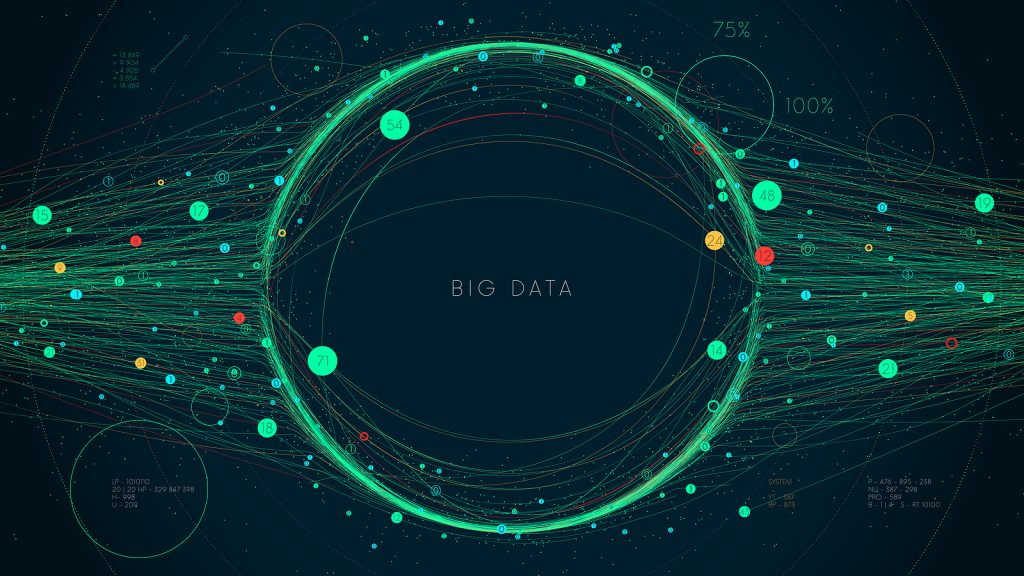In an increasingly digital world, the term “Big Data” has become ubiquitous. It refers to the vast volumes of data generated every second from various sources such as social media, transactions, sensors, and more. But what makes Big Data truly transformative is not just its size, but how it is analyzed and utilized to drive insights, decisions, and innovations.
From enhancing customer experiences to predicting market trends and improving healthcare outcomes, Big Data is revolutionizing industries across the globe. This article will delve into the fundamentals of Big Data, its applications, and how it is shaping the future.
Big data refers to extremely large data sets that are so complex and vast that traditional data processing tools and techniques are insufficient to analyze them. Big data is characterized by its volume, velocity, and variety, and it typically comes from a variety of sources, such as social media, IoT devices, and scientific research.
Table of Contents
Big Data: trends, patterns, opportunities
Big data is used in a wide range of applications, such as predicting consumer behavior, monitoring and optimizing complex systems, and detecting fraud and security breaches. By analyzing and processing large amounts of data, businesses can gain a competitive advantage and improve their operations.
However, big data also presents several challenges, such as data quality, privacy, and security concerns. As a result, many organizations are investing in big data analytics tools and techniques that can help them manage, process, and extract insights from their data while addressing these challenges.
Overall, big data has the potential to revolutionize the way organizations operate and make decisions, and it is likely to play an increasingly important role in many industries and sectors in the future.
Big Data: What it is and why it matters
The term Big Data describes the large volume of data that currently floods companies, health, macroeconomics and, in general, all the aspects that make up our society and the way we relate to each other.
Also Read: How to get more iCloud storage space in Apple device and Details safe mode on Mac
When we talk about Big Data we refer to huge amounts of data whose size, complexity and growth rate make it extremely difficult to capture, manage, analyze and of course process it using conventional tools.
What is Big Data
In this way, the minimum size that decides if we talk about Big Data is not perfectly defined and, in fact, can evolve over time. The most accurate consensus is found in data sets that range between 40-50 Terabytes.
Namely reducing production costs, designing products and services that are in demand, improving efficiency in the company’s decision-making or creating advertising campaigns more targeted to the needs of each specific customer.
Big Data characteristics
The field of big data has emerged in response to the need to extract insights and valuable information from these massive data sets. Advances in computing power, storage, and data processing technologies have made it possible to process and analyze big data in real-time, enabling organizations to gain valuable insights and make data-driven decisions.
- Volume: This feature refers to the huge amount of data generated and available in our environment. In a Big Data project the amount of information that is generated is immense and above all, it does not stop being produced. As databases grow in size, so do the applications and architecture built to collect and store that data.
- Velocity: Here we talk about the speed with which data is created, stored and processed. In some processes , time is essential and a delay in its processing would be fatal. If the data is not received, stored and processed in real time, it will become obsolete and its usefulness will be lost.
- Variety: The data received in a Big Data project is generally very diverse. This data can come from various sources and can be found in different formats . For this reason we need to integrate different technologies and applications to be able to organize, process and integrate the different data and to be able to obtain effective conclusions or identify useful patterns.
- Veracity: This last characteristic refers to the reliability of the information that is collected in the process. The quality of this data will be essential to reach effective conclusions and even a competitive advantage in the business world. Companies will have to invest in applications that are capable of identifying and eliminating data that is unpredictable or that causes uncertainty.
In short, Big Data allows us to analyze vast amounts of data and obtain answers to questions, solve problems and improve production processes. The compilation of these enormous amounts of information and the search for trends and patterns within the data allow us to identify what we call opportunities and create value in multiple ways.
Types of data in Big Data
The data that has to be processed in any Big Data project can be classified according to different criteria. One of the most widespread classifications is the one proposed by the giant IBM:
- Transactions: It refers to the data that comes from call records, messaging and bills that a communications operator can record: telecommunications, use of cards, types of payments, etc.
- Web: They refer to all the data that is generated from browsing the Internet, web pages and social networks. It is really useful information, which can allow companies to know the preferences and tastes of consumers.
- M2M: This classification encompasses all those technologies that connect to devices (with sensors, for example) to collect large amounts of data. These types of sensors can be of various natures and collect all kinds of data: transport, thermometers, automatic irrigation, electricity meters, water pumps, marine buoys, etc, etc.
- Biometrics: In this section we include the reading of fingerprints, retina, facial recognition, genetic recognition, voice, etc. In short, all the data that helps to unequivocally recognize an individual.
- Human beings: We as human beings also generate information on a daily basis with our behavior: phone calls, emails, voice notes, mobile messaging and web applications, etc.
Structured Data Types
But it is not the only way we have to classify the data in a Big Data project, it can also be done based on its format or structure:
- Structured Data: We refer to data that is perfectly arranged according to some type of pattern, which allows it to be stored in tables and processed quickly and efficiently.
- Unstructured Data: They could be the vast majority and refer to data that does not have a given definition: length, format, shape, They are data collected in its original form, without processing. We are really surrounded by them in our day to day: spreadsheets, images, data files, audio recordings, etc.
- Semi Structured Data: They are data with a certain previous organization, but that are not perfectly structured, for example HTML files (markup language for the construction of web pages).
FAQs on Big Data
1. What is Big Data?
Big Data refers to extremely large data sets that can be analyzed computationally to reveal patterns, trends, and associations, especially relating to human behavior and interactions. It is characterized by its volume, velocity, variety, and veracity.
2. How is Big Data used in business?
Businesses use Big Data to gain insights into customer behavior, optimize operations, and drive decision-making. For example, analyzing consumer data helps companies personalize marketing strategies, improve product recommendations, and enhance customer service.
Also Read: Cloud-Based Phone System – Advantages And Disadvantages
3. What are the main challenges associated with Big Data?
The main challenges include data privacy and security, managing and storing vast amounts of data, ensuring data quality and accuracy, and extracting meaningful insights from complex data sets.
4. How does Big Data impact healthcare?
In healthcare, Big Data is used to improve patient outcomes, streamline operations, and facilitate medical research. It helps in predicting disease outbreaks, personalizing treatment plans, and managing electronic health records more efficiently.
5. What technologies are essential for Big Data analysis?
Technologies essential for Big Data analysis include Hadoop, Spark, NoSQL databases, data mining tools, machine learning algorithms, and data visualization software. These tools help in storing, processing, and analyzing large data sets effectively.
Conclusion
Big Data is not just a buzzword; it is a powerful tool that is reshaping the way we live and work. By harnessing the power of Big Data, organizations can make more informed decisions, uncover hidden opportunities, and gain a competitive edge. However, as we continue to generate and rely on massive amounts of data, it is crucial to address the associated challenges, particularly regarding privacy and security.
Embracing Big Data responsibly and ethically will ensure that its benefits are maximized while minimizing potential risks. As technology advances, the influence of Big Data will only continue to grow, paving the way for new innovations and discoveries.











